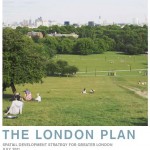 26 July 2011: After close to two years of consultation, London’s new spatial strategy has been published by the Mayor. The London Plan forms part of the development plan for Greater London and London boroughs’ local plans need to be in general conformity with the London Plan. Its policies guide decisions on planning applications for new developments and strategies by councils and the Mayor. Chapter 5 of the strategy focuses on London’s response to climate change and building on previous versions of the London Plan (2004 and 2008), which achieved a significant impact on the carbon efficiency of new development, the new London Plan sets out a number of requirements. These include:
26 July 2011: After close to two years of consultation, London’s new spatial strategy has been published by the Mayor. The London Plan forms part of the development plan for Greater London and London boroughs’ local plans need to be in general conformity with the London Plan. Its policies guide decisions on planning applications for new developments and strategies by councils and the Mayor. Chapter 5 of the strategy focuses on London’s response to climate change and building on previous versions of the London Plan (2004 and 2008), which achieved a significant impact on the carbon efficiency of new development, the new London Plan sets out a number of requirements. These include:
- CO2 savings of 25 per cent more than national building requirements at a minimum on all new developments
- As previously, all major development should provide detailed energy assessments on how these emission savings are to be made
- In contrast to the Government’s recent climb-down in its definition of ‘zero carbon’, London Plan Policy 5.2Da requires energy assessments to include separate details of unregulated emissions and proposals for how these emissions are to be reduced
- When preparing LDFs boroughs should identify opportunities for reducing CO2 emissions from the existing building stock, and also identify and establish decentralised energy network opportunities.
- With the aid of the London Heat Map, boroughs should develop energy master plans for specific decentralised energy opportunities.
Further policy requirements for decentralised energy systems, renewable and innovative energy technologies and the overheating and cooling of buildings are also set out in the Plan.

